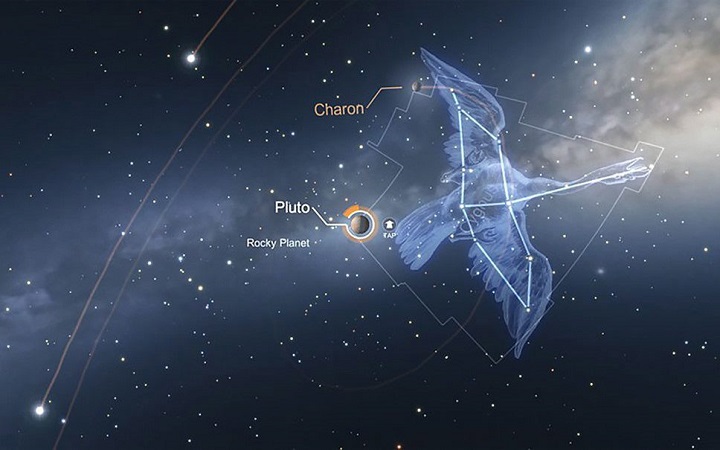Jeremy Fontana was always getting questions from guests about the stars in the night sky above his outdoor retreat in Quebec’s Eastern Townships.

So he decided to find a way that would help star struck visitors understand the mysteries of the heavens above.
“If you could look at the real sky and, at the same time know what you were looking at, it would be perfect,” Fontana said in an interview from the Au Diable Vert resort in Glen Sutton, Que.
So about two years ago, Fontana connected with Andrew Fazekas, a science writer and educator to create ObservEtoiles, an outdoor planetarium that uses augmented reality.
“It’s never been done before,” Fontana said. “It’s totally pioneering.”
Visitors sit in an open-air Roman-style amphitheatre with 180 heated seats built into the side of a mountain at an altitude of 365 metres.
The 90-minute show currently held weekly on Saturdays begins with a virtual trip through the solar system followed by a detailed tour of the actual night sky.
Using a special headset, they look up and view illustrated images of stars and constellations which overlap the actual night-time sky.
“As you turn your head around, the constellations appear and disappear, but they’re superimposed over the real stars,” Fontana said. “That’s really the essence of the augmented reality, you’ve got both things happening at the same time.”
WATCH BELOW: We celebrate International Astronomy Day with Scott McGillivray from the the RASC and the latest news from space.

As an astronomer provides a laser-guided tour, the Greek and Roman mythology upon which the constellations are patterned are also explained.
READ MORE: NASA’s Mars rover goes silent after massive dust storm envelops planet, blotting out sun
Fazekas developed the show’s concept and content and also brought National Geographic on board as partner.
The entrepreneurs hope to expand the concept elsewhere.
“I’m bringing in the educational and science aspect (and) National Geographic is bringing in their networking muscle and their worldwide branding,” he said.
“To be outdoors under a truly dark sky filled with countless numbers of stars is a really humbling experience and then to have this technology really unlock some of the mysteries of the night sky … it’s unlike anything that’s out there.”
The experience is additionally enhanced because the southern-facing location was only recently designated a “Dark Sky Preserve” by the Royal Astronomical Society of Canada. It’s only the second such preserve in Quebec after Mont-Megantic, home to an observatory.
“It allows you to see a lot more stars than you would in light-polluted areas,” Fazekas said.
READ MORE: Astronomers find new evidence of ninth planet in our solar system
Cloudy skies won’t stop the night sky show, which starts as soon as it gets dark.
As a science communicator, Fazekas said he really wants to excite young people — “the next generation of astronomers, astronauts, mathematicians and engineers.”


Comments